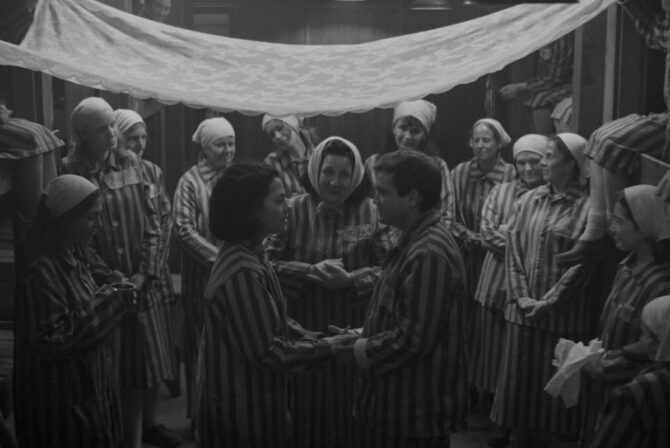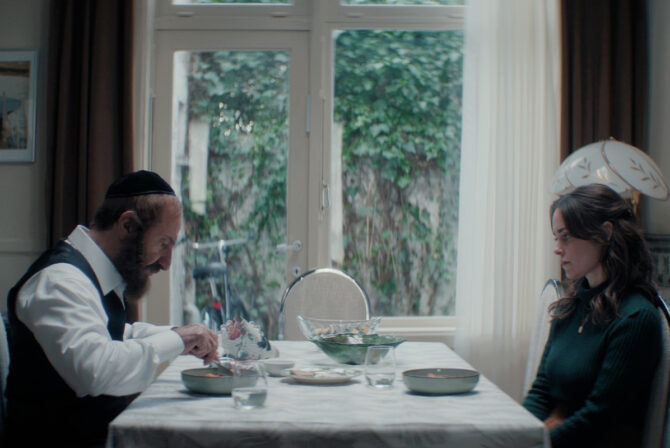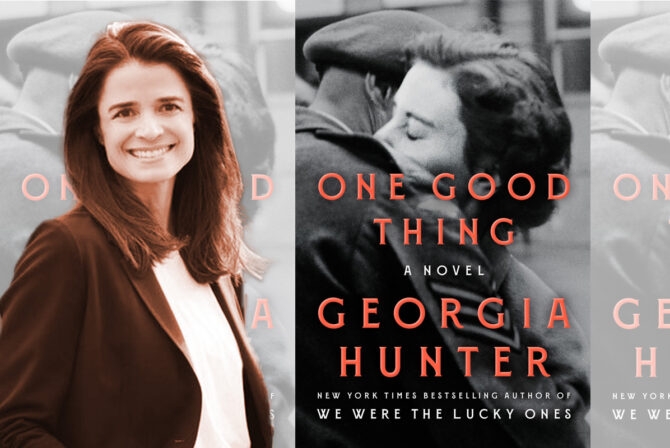I used to dread the very idea of talking to my kids about the Holocaust. When I was a kid, I listened to survivors share their experiences. My young mind was imprinted with photographs of the dead and the dying, of gaunt bodies and empty eyes, of trouble and fear. The story of the Holocaust I heard as a child was the story of the Jewish people crushed beneath the unstoppable force of the Nazi machine. The story of the Holocaust was a burden. I did not look forward to having to pass that burden on to my children.
But I had only heard half the story. I had only heard the Nazis’ story: the story of the terrible things they did; of how they controlled our lives; of the things they forbade to us; of how they destroyed us.
Except, of course, they did not destroy us. We are still here. We have our own story to tell about the Holocaust. It is a story of hope and survival and the continuity of Jewish life.
The story of the Holocaust may never be cheerful, but if told correctly can be an empowering message for our children. For instance, in spite of the Nazis forbidding us to do so many things, we did them all anyway. Chaim Kaplan, an educator in the Warsaw ghetto, said in his diary, “In these days of our misfortune, we live the life of Marranos. Everything is forbidden to us, and yet we do everything.”
Jews in the Holocaust left diaries, stories, art, and music –and they hid these in places where we could later find them. We can use this legacy to give the victims, our ancestors, back their names, their faces, their voices, and their humanity.
When we listen to our ancestors’ voices, we hear a very different story. It’s the story of people, in the face of terror, holding onto those things that they felt most important, not only their love, families, and traditions, but also their community, art, and music. We see pictures of life and living, of families and communities, of joy as well as sorrow. We discover the inner strength of so many, even in the face of chaos, destruction, and genocide.
Our lives and our children’s lives are enriched by the understanding of how our ancestors fought for and held onto their Judaism, and how their Judaism served to help them hold onto their sanity and even to some hope. We can, in fact, use the story of the Holocaust to teach our children our core Jewish values like education and community. We can use this truth: when their children were forbidden to attend school, the Jews in the ghettos formed hidden schools. In spite of laws making the practice of Judaism punishable by death, every ghetto had secret services. Many ghettos had theaters and orchestras, where, in spite of laws to the contrary, musicians continued to play the music of non-Jews such as Mozart, Beethoven, and Bach.
The Holocaust can enable us to teach our children the importance of asking questions. In the face of grave deprivation, our ancestors asked their rabbis what to do. The questions and responses from the rabbis in the ghettos are fascinating. When no candles can come across the ghetto walls, they said you can say the Shabbat candle-lighting blessing over an electric light. When no wine can be smuggled through the barbed wire that surrounds the ghetto, you can use tea to celebrate Passover.
We can tell our kids that it is a story about the importance of holding on to community in the most trying times. Even in the camps, services continued in hiding, quietly. Stories are told of poetry discussions in the bunkers at Auschwitz. Survivor Moshe Winterter tells a terrifying and uplifting story about making a shofar in a labor camp in Poland, at the request of his Rabbi.
Finally, we can use the story of the Holocaust to teach our children the importance of our Jewish faith. Survivor Rivka Wagner has a wonderful answer for when people insist she should have lost her faith because of what happened to her: “Our faith was the one thing they could not take from us.” People clung to all kinds of faith: faith in love, in goodness, in a new tomorrow.
The Holocaust as seen through our ancestors’ eyes, as difficult as it is, is a story that I can tell my children. It’s a story of courage and strength, not just of fear and loss. It is the story of people holding onto their humanity and faith in terrifying circumstances. This is a story that I want to pass on to my kids.
You can find out more about how to teach this new narrative in your religious school at www.TeachTheShoah.org. You can find out about a new ceremony for commemorating and celebrating Yom HaShoah using this new narrative at www.HaShoahHaggadah.org.








